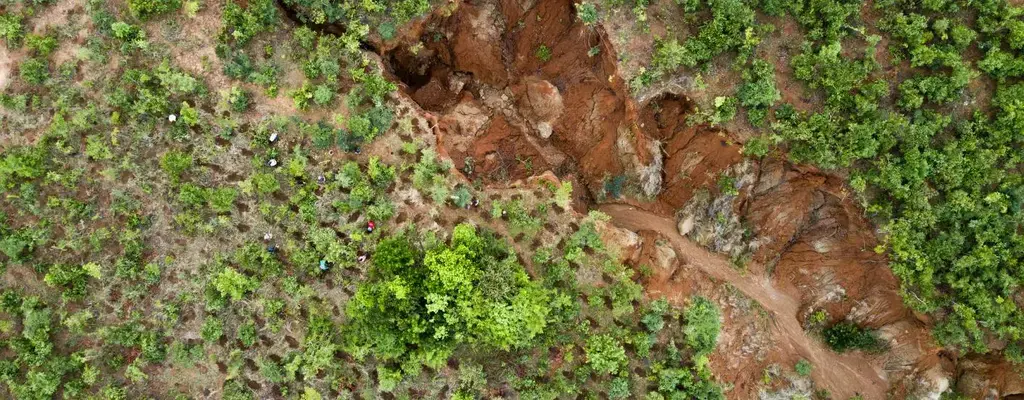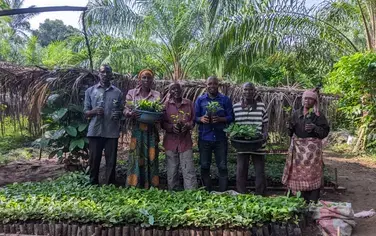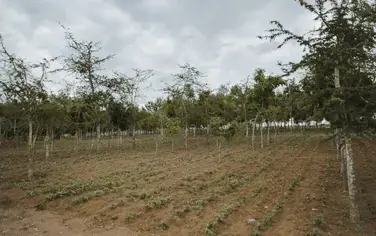Africa’s land restoration sector is growing by the day. Through AFR100, 32 countries have pledged to restore 100 million hectares of Africa’s degraded land — an area the size of Egypt. They realized that healthy land can bring food, water and income to local communities, while storing planet-warming carbon and protecting vulnerable biodiversity.
Those commitments are an important start, but action must follow. In September 2021, WRI, One Tree Planted, and Realize Impact took a step in that direction: We are deploying $15 million to 100 locally led community organizations and entrepreneurs, broken down into individual grants and loans of $50,000-500,000. More than 3,200 of these African innovators applied for funding from this TerraFund for AFR100 in two short weeks.
At the United Nations COP26 climate conference in November 2021, we announced the first cohort of 20 organizations, and African ministers called on funders and their own peers to raise more than 100 times this initial sum to kickstart a second phase of AFR100. We spotlighted 11 additional organizations in January and listened to the experiences of entrepreneurs like Jane Maigua, who leads Exotic EPZ, a macadamia nut processing company in Kenya, and community leaders like Pauline Nantongo Kalunda, who manages ECOTRUST, a Ugandan NGO that pays farmers to grow trees.
Now, after six months of careful screening, our team has selected 80 community projects and 20 enterprises working across 27 countries. We have already funded many of these leaders, who will restore thousands of hectares, grow millions of trees, and engage tens of thousands of community members.
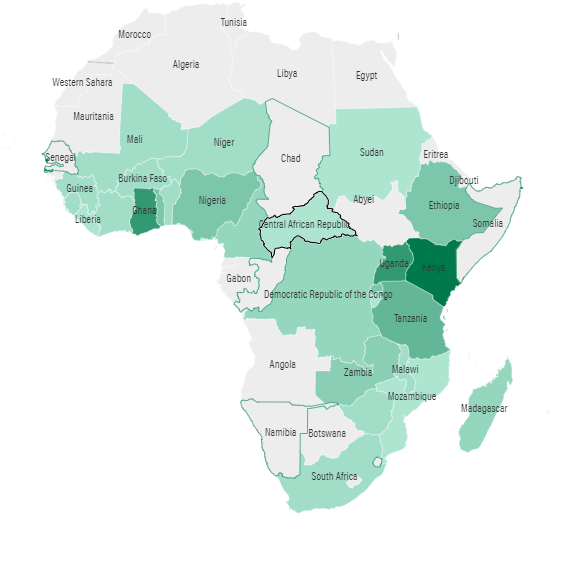
Map: TerraFund for AFR100 Cohort-The Top 100
How did we evaluate 3,200 applications in six months?
In September, the team activated the AFR100 partner network to spread the application guidelines through email, WhatsApp and word-of-mouth. We held a Q&A webinar with more than 1,100 attendees, wrote an extensive FAQ based on their feedback, and received 3,271 expressions of interest from 31 African countries. The applicants embraced a wide variety of tree-based restoration techniques, from agroforestry to mangrove restoration and assisted natural regeneration. On average, they asked for $145,000 and had nine years of restoration experience, which told us that many of the applicants were early-stage.
Key Questions for the Selection Process
The sheer number of submissions surprised and inspired us, but we had developed a robust selection process — built from five years’ experience collaborating on WRI’s Land Accelerator entrepreneur training program — to guide us along the way:
- Organization: Is the organization and project well run?
- Scalability: Can it expand with more funding and reach economies of scale?
- Replicability: Can its model apply to other landscapes or organizations?
- Environmental impact: How will it improve soil, water quality, carbon storage, and biodiversity?
- Social impact: How will it improve the livelihoods of local communities and marginalized people?
- Profitability (for enterprises): Is the business model viable?
Within two weeks, we had whittled down the list to the 459 most promising candidates (114 enterprises and 345 nonprofits), and we invited them to submit detailed applications.
How did we screen through that overwhelming number of applications, written in both French and English? As we learned, we constantly iterated to fit the needs of the applicants and work more efficiently.

First, we only considered organizations that were operating in AFR100 countries, that had experience growing trees, and that submitted complete applications. Our bilingual screening team — consisting of restoration, entrepreneurship and project management experts — looked at each of the remaining applications, ensuring that the organization was legally registered, that it was not planting a single tree species, and that it had extensive experience working with local communities.
The remaining applications then received a close look from two more reviewers to ensure that every application received a fair assessment (and none fell through the cracks). Based on their extensive knowledge of restoration projects and benchmarks, the team passed along projects whose cost per tree or number of trees per hectare restored was within WRI’s estimates for each type of restoration, and who were planning to grow fewer than 6,000 trees.
The team also looked at each organization’s track record. We excluded organizations that asked for more than 1.5-times their past budget or revenue, planned to plant more than 3-times what they grew in the previous year, and focused on non-tree growing work. When both reviewers agreed that the application fit our criteria, the application was approved to go to the second round.
How did we select the top 100?
Two weeks later, we had received 386 detailed applications from the 459 invited organizations, and we began to select our cohort. Each application was reviewed and scored on a scale of 1-5 on the following categories: the organization’s management capacity, past stability and prospects for growth, and record of environmental and social impact (including whether they were growing native species), along with the proposed project’s use of funding and level of community engagement. The team also assessed each enterprise’s ability to use and repay loans.
Accompanied by notes from the review team, those individual scores were combined to create an overall 1-5 score. Active AFR100 Focal Points, the political leaders of this pan-African initiative, also provided feedback on the top applications from their countries.
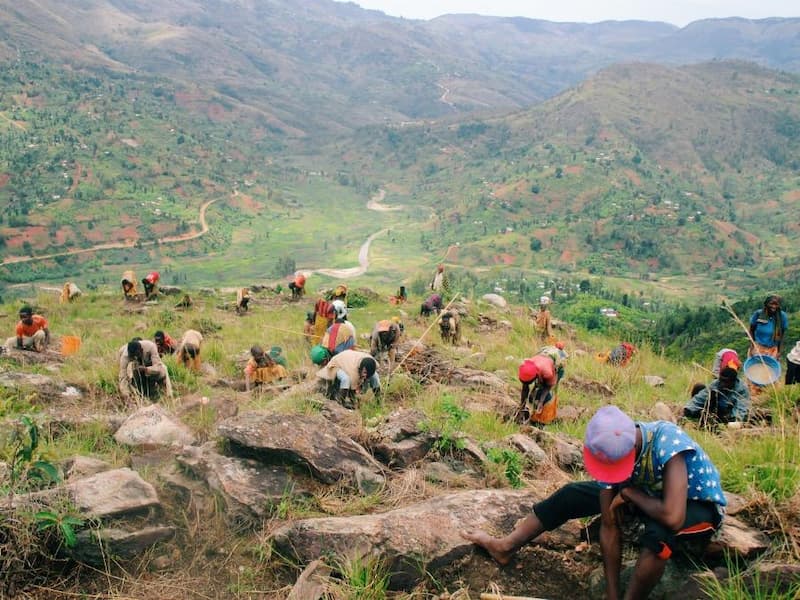
Community tree planting in Burundi. Photo by Plant with Purpose
Starting with the highest scoring applications, the team then conducted interviews, asking each organization a standard series of questions on their history, seedling and tree-growing strategies, monitoring and evaluation capacity, financial health and relationships with local communities and government. For enterprises, the team asked about their business plan and past profitability. We used this to opportunity to assess what kind of support the organizations would need to make their projects as successful as possible.
We then hosted more than 30 selection meetings, where the interviewers presented each project and their budget to the wider selection team and recommended by consensus whether to include the organization in the cohort and allocated a proposed budget to each. When building the final cohort, we considered the location of the project and whether it had support from credible organizations, the government, or existing AFR100 partners.
Many second-round applicants asked for close to $500,000, the maximum funding available, even though it was significantly higher than their annual budget in years past. We worked with each organization to craft a more appropriate budget: Around three-quarters agreed to a reduced budget and new scope of work. Finally, the nonprofits signed grant agreements with One Tree Planted and the enterprises agreed to loan contracts with Realize Impact, and the funding started flowing.
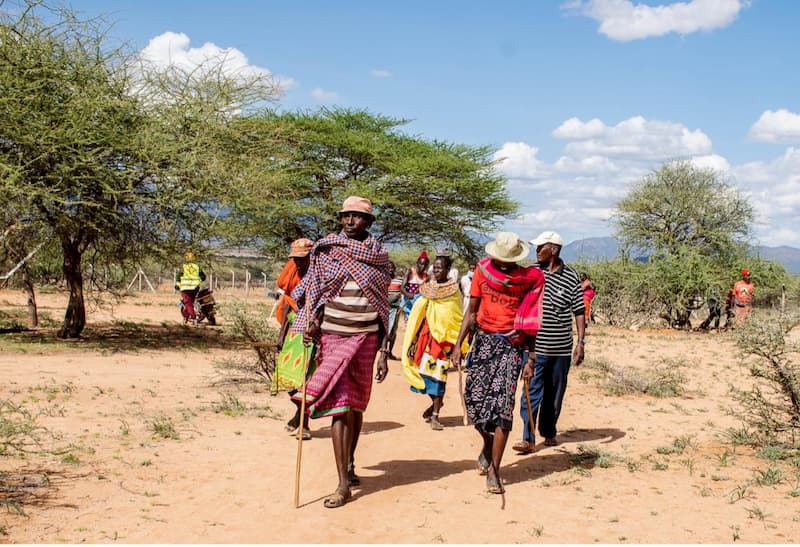
Samburu community attending capacity building training. Photo by Acacia Epz Ltd
What distinguished the best applications from the rest?
Our initial analysis shows that the cohort members wrote clear applications that communicated the organization’s experience managing projects. Many of the projects that we considered but didn’t make the cut would have delivered solid environmental and social impact, but most needed technical assistance to improve their organizational capacity. An organization whose annual budget is less than $30,000, for example, might struggle to use $50,000 well. In the coming years, we plan to connect those early-stage innovators with training and mentorship programs like the Land Accelerator so that they can build stronger projects and attract investment.
What’s next?
Now, our cohort is preparing for this year’s planting. They are building nurseries, mobilizing communities, and purchasing equipment. Each project will use TerraMatch, an online reporting and monitoring platform, to track their work, submit photos and progress statistics, and bring us stories from the ground. Over the next five years, these six-month updates will help the partners evaluate how restoration projects and enterprises succeed — and help us refine our own methods for monitoring progress.
The TerraFund cohort is just the first step toward the second phase of the AFR100 Initiative. Throughout the year, we will be profiling these champions and learning more about the inner workings of their organizations.
These 100 projects are the tip of the iceberg: Hundreds more of our applicants — and other projects unearthed by our partners— are ready for finance. Right now, WRI is cataloguing funding opportunities, raising more capital. The Land Accelerator Africa is also providing technical assistance to 100 more enterprises, getting them ready to receive and pay back loans. With this momentum, the goal of turbocharging locally led restoration projects and enterprises across Africa is within reach.
Meet the cohort at www.africa.terramatch.org. Questions? Reach out to terramatch@wri.org.
TerraFund for AFR100 is funded by the Bezos Earth Fund, along with AKO Foundation, Caterpillar Foundation, DOEN Foundation, Good Energies Foundation, Lyda Hill Philanthropies, and Meta.
